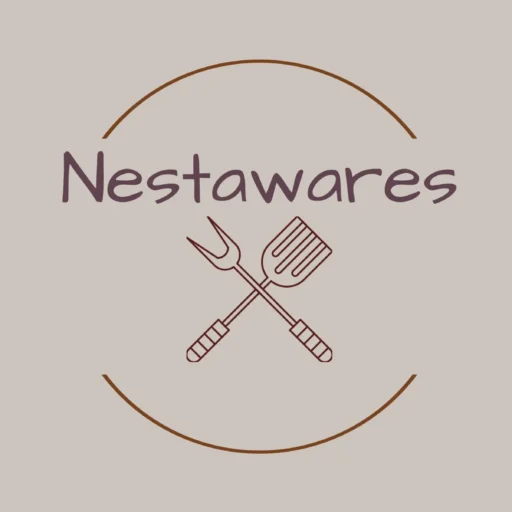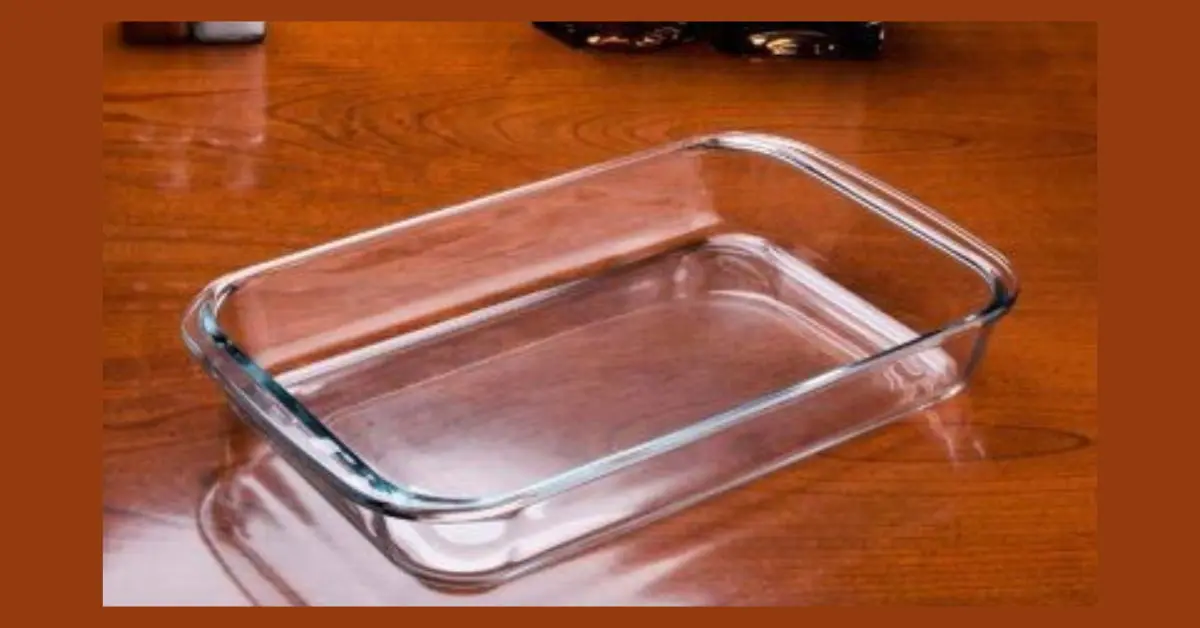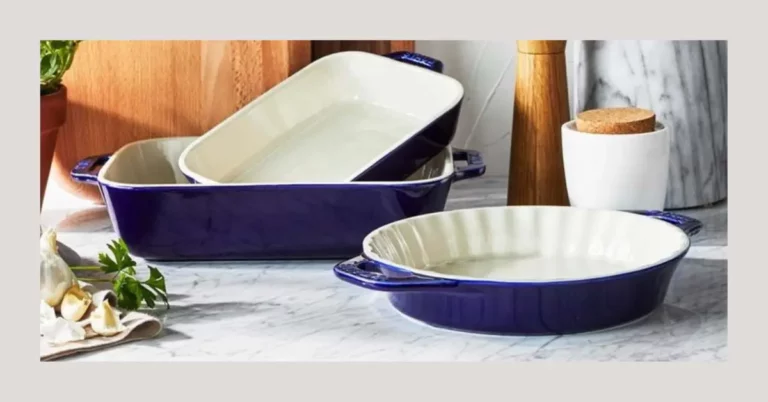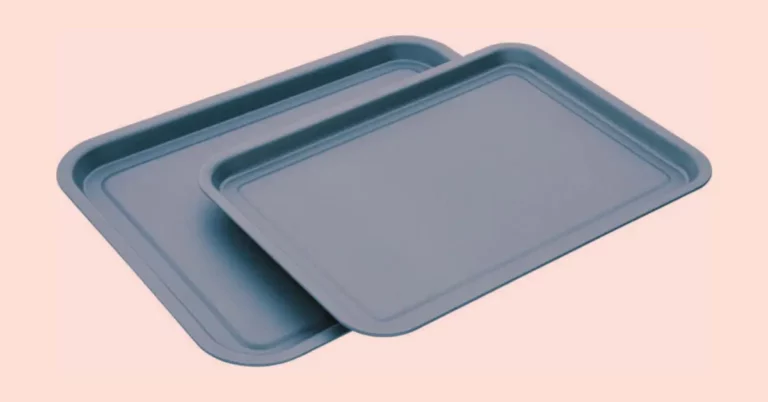Disclosure: As an Amazon associate, I may earn from qualifying purchases
If you are looking for a bit of expertise in the field of baking using glass bread pans, then you are at the right place. We’ve covered the basics in the previous page, and now it’s time to dive deeper.
As you embark on your bread-baking adventure, you might have a few burning questions. How do you ensure your bread doesn’t stick? What are the best baking techniques to achieve that perfect rise and texture? How do you adjust baking times and temperatures when using glass pans?
And let’s not forget about the various types of lids available and how they can enhance your baking experience. Don’t worry, we’ve got all the answers!
In this article, we’ll tackle these frequently asked questions head-on, providing you with valuable insights, tips, and tricks to unleash your inner baking maestro.
Baking bread is both a science and an art, and using glass bread pans adds an extra layer of excitement to the process. One of the most common concerns when using glass pans is the fear of bread sticking to the surface.
But fear not! We’ll guide you through the art of greasing your glass pans properly, ensuring easy release every time. Plus, we’ll share some ingenious tips and techniques for achieving that picture-perfect loaf with a golden crust and a soft, fluffy interior.
But it doesn’t stop there. Baking times and temperatures can vary when using glass pans, as they conduct and retain heat differently than their metal counterparts. We have attempted to provide you with some guidelines in this article, for baking your bread to perfection.
Whether you’re making a classic white loaf, a crusty artisanal boule, or even experimenting with gluten-free or whole grain recipes, we’ve got you covered.
These specialized molds can create beautiful shapes, such as round loaves or traditional baguettes, adding a touch of elegance to your baking creations. We’ll discuss the different types of lids available that will help create a crispy crust.
By the end of this article, we hope to have answered most of the pressing questions regarding glass baking dishes and you’ll be equipped to create artisan-quality bread using these. So roll up your sleeves, preheat your oven, and get started!
As you embark on your bread-baking adventure, you might have a few burning questions. How do you ensure your bread doesn’t stick? What are the best baking techniques to achieve that perfect rise and texture? How do you adjust baking times and temperatures when using glass pans?
And let’s not forget about the various types of lids available and how they can enhance your baking experience. Don’t worry, we’ve got all the answers!
In this article, we’ll tackle these frequently asked questions head-on, providing you with valuable insights, tips, and tricks to unleash your inner baking maestro.
Baking bread is both a science and an art, and using glass bread pans adds an extra layer of excitement to the process. One of the most common concerns when using glass pans is the fear of bread sticking to the surface.
But fear not! We’ll guide you through the art of greasing your glass pans properly, ensuring easy release every time. Plus, we’ll share some ingenious tips and techniques for achieving that picture-perfect loaf with a golden crust and a soft, fluffy interior.
But it doesn’t stop there. Baking times and temperatures can vary when using glass pans, as they conduct and retain heat differently than their metal counterparts. We have attempted to provide you with some guidelines in this article, for baking your bread to perfection.
Whether you’re making a classic white loaf, a crusty artisanal boule, or even experimenting with gluten-free or whole grain recipes, we’ve got you covered.
These specialized molds can create beautiful shapes, such as round loaves or traditional baguettes, adding a touch of elegance to your baking creations. We’ll discuss the different types of lids available that will help create a crispy crust.
By the end of this article, we hope to have answered most of the pressing questions regarding glass baking dishes and you’ll be equipped to create artisan-quality bread using these. So roll up your sleeves, preheat your oven, and get started!
Frequently Asked Questions
Do you have to grease a glass baking dish?
Yes, it’s a good idea to grease a glass baking dish to prevent food from sticking to it. You can use butter, cooking spray, or a vegetable oil like canola or olive oil to grease the pan.
Greasing the pan can help with cleanup and make it easier to remove the food once it’s cooked.
Greasing the pan can help with cleanup and make it easier to remove the food once it’s cooked.
What happens if you put non oven safe glass in the oven?
If you put non-oven safe glass in the oven, the glass could shatter or explode, causing injury and damage to the oven.
Non-oven safe glass is not designed to withstand the high temperatures required for baking, and may not be able to handle the thermal shock caused by the sudden change in temperature.
It is important to always check the manufacturer’s instructions for any glassware you plan to use in the oven and ensure it is oven-safe before using it.
If you are unsure, it is best to use an alternative, oven-safe material such as metal or ceramic.
Non-oven safe glass is not designed to withstand the high temperatures required for baking, and may not be able to handle the thermal shock caused by the sudden change in temperature.
It is important to always check the manufacturer’s instructions for any glassware you plan to use in the oven and ensure it is oven-safe before using it.
If you are unsure, it is best to use an alternative, oven-safe material such as metal or ceramic.
How can you tell if a glass dish is oven safe?
To determine if a glass dish is oven-safe, you should look for a label or symbol that indicates it is safe for use in the oven. The label may indicate the maximum temperature that the dish can withstand.
As ana alternative, you can check the manufacturer’s instructions or contact the manufacturer directly to confirm if the dish is oven-safe.
If you still can’t tell if a glass dish is oven-safe, it is best to err on the side of caution and not use it in the oven to avoid the risk of it breaking or shattering.
As ana alternative, you can check the manufacturer’s instructions or contact the manufacturer directly to confirm if the dish is oven-safe.
If you still can’t tell if a glass dish is oven-safe, it is best to err on the side of caution and not use it in the oven to avoid the risk of it breaking or shattering.
Does a glass pan bake hotter than a metal pan?
Glass and metal pans conduct heat differently, so they can result in different baking temperatures and times. In general, glass pans can hold onto heat longer than metal pans, which can result in longer baking times.
Since glass is a poor conductor of heat, it can take longer for the oven to heat up a glass pan compared to a metal pan. It’s important to note that oven temperature can also vary based on the type and size of the pan used.
To ensure even baking, it’s a good idea to check the bread or baked goods frequently while in the oven and adjust the baking time as necessary.
Since glass is a poor conductor of heat, it can take longer for the oven to heat up a glass pan compared to a metal pan. It’s important to note that oven temperature can also vary based on the type and size of the pan used.
To ensure even baking, it’s a good idea to check the bread or baked goods frequently while in the oven and adjust the baking time as necessary.
What is the best oven safe glass?
There are several types of oven-safe glass, including borosilicate glass and tempered glass.
Borosilicate glass is known for being highly resistant to thermal shock, which means it can withstand rapid temperature changes without breaking.
Tempered glass is also heat-resistant and can withstand high temperatures, but it is designed to break into small, dull pieces if it does break, which makes it safer to use.
Some popular brands of oven-safe glass include Pyrex, Anchor Hocking, and Duralex.
Borosilicate glass is known for being highly resistant to thermal shock, which means it can withstand rapid temperature changes without breaking.
Tempered glass is also heat-resistant and can withstand high temperatures, but it is designed to break into small, dull pieces if it does break, which makes it safer to use.
Some popular brands of oven-safe glass include Pyrex, Anchor Hocking, and Duralex.
Are all glass lids oven safe?
Not all glass lids are oven safe. It’s important to check the manufacturer’s instructions or labeling to determine the maximum oven temperature that a glass lid can safely withstand.
Some glass lids may be oven safe only up to a certain temperature, while others may not be oven safe at all.
It’s also important to note that sudden temperature changes can cause glass to break, so it’s generally recommended to avoid placing glass lids directly from the freezer or refrigerator into a preheated oven.
Some glass lids may be oven safe only up to a certain temperature, while others may not be oven safe at all.
It’s also important to note that sudden temperature changes can cause glass to break, so it’s generally recommended to avoid placing glass lids directly from the freezer or refrigerator into a preheated oven.
Will aluminum foil scratch oven glass?
It is possible for aluminum foil to scratch oven glass if it comes into contact with the glass while hot or if it is rubbed against the glass.
To avoid scratching, it’s best to use caution when handling aluminum foil around oven glass and to avoid direct contact with the glass.
You could also use a baking sheet or other oven-safe containers as a substitute to protect the oven glass.
To avoid scratching, it’s best to use caution when handling aluminum foil around oven glass and to avoid direct contact with the glass.
You could also use a baking sheet or other oven-safe containers as a substitute to protect the oven glass.
How can you tell if glass is tempered?
Tempered glass is a type of safety glass that is more durable than regular glass. It is often used in applications where there is a risk of the glass breaking, such as in car windows and shower doors.
Here are some ways to tell if glass is tempered:
If you cannot determine whether a piece of glass is tempered, it’s best to err on the side of caution and treat it as if it is not tempered.
Here are some ways to tell if glass is tempered:
- Look for an etched mark: Most tempered glass products will have a small etched mark on them that indicates that they are tempered. The mark may be located in one of the corners or along the edge of the glass.
- Check the edges: Tempered glass has smooth, rounded edges that are less likely to chip or crack than regular glass.
- Try to break it: While we don’t recommend intentionally breaking glass to test whether it is tempered, tempered glass is much harder to break than regular glass.
If you do accidentally break a piece of glass and it shatters into small, rounded pieces, it is likely tempered glass.
If you cannot determine whether a piece of glass is tempered, it’s best to err on the side of caution and treat it as if it is not tempered.
Is it better to bake in foil or glass pans?
Both foil and glass pans have their advantages and disadvantages when it comes to baking.
Foil pans are disposable, inexpensive, and don’t need to be greased. They are also lightweight and easy to handle.
However, foil pans are not as durable as glass pans and can easily bend or warp during baking.
On the other hand, glass pans are more sturdy and long-lasting than foil pans, and they are also aesthetically pleasing, making them suitable for serving. They can also help distribute heat more evenly than foil pans.
But, glass pans can be heavier and more difficult to handle, and they may require greasing to prevent sticking.
Foil pans are disposable, inexpensive, and don’t need to be greased. They are also lightweight and easy to handle.
However, foil pans are not as durable as glass pans and can easily bend or warp during baking.
On the other hand, glass pans are more sturdy and long-lasting than foil pans, and they are also aesthetically pleasing, making them suitable for serving. They can also help distribute heat more evenly than foil pans.
But, glass pans can be heavier and more difficult to handle, and they may require greasing to prevent sticking.
Can I use Pam to grease a cake pan?
Yes, you can use Pam or any non-stick cooking spray to grease a cake pan. Just make sure to spray the entire surface of the pan, including the corners and edges, to prevent the cake from sticking.
You can also use butter or vegetable shortening to grease the pan, or dust it with flour or cocoa powder to prevent sticking.
You can also use butter or vegetable shortening to grease the pan, or dust it with flour or cocoa powder to prevent sticking.
Is anchor hocking same as Pyrex?
Anchor Hocking and Pyrex are two separate brands of glass bakeware. However, both companies produce similar products, such as glass baking dishes, measuring cups, and mixing bowls.
They may also have similar features, such as heat-resistant glass and dishwasher-safe designs.
Having said that, there may still be differences in the specific materials used, product designs, and manufacturing processes.
They may also have similar features, such as heat-resistant glass and dishwasher-safe designs.
Having said that, there may still be differences in the specific materials used, product designs, and manufacturing processes.
Why did Pyrex stop using borosilicate?
Pyrex used to be made of borosilicate glass, which has a lower coefficient of thermal expansion than soda-lime glass used in most other glass products.
This made borosilicate glass less prone to thermal shock and breakage when exposed to temperature changes.
However, in the 1990s, Corning, the original manufacturer of Pyrex, sold the brand to World Kitchen, which began making Pyrex with soda-lime glass instead of borosilicate glass.
The decision was likely made for economic reasons, as soda-lime glass is cheaper and easier to manufacture than borosilicate glass.
Some consumers have reported issues with breakage when using Pyrex made with soda-lime glass, particularly when exposed to rapid temperature changes.
This made borosilicate glass less prone to thermal shock and breakage when exposed to temperature changes.
However, in the 1990s, Corning, the original manufacturer of Pyrex, sold the brand to World Kitchen, which began making Pyrex with soda-lime glass instead of borosilicate glass.
The decision was likely made for economic reasons, as soda-lime glass is cheaper and easier to manufacture than borosilicate glass.
Some consumers have reported issues with breakage when using Pyrex made with soda-lime glass, particularly when exposed to rapid temperature changes.




